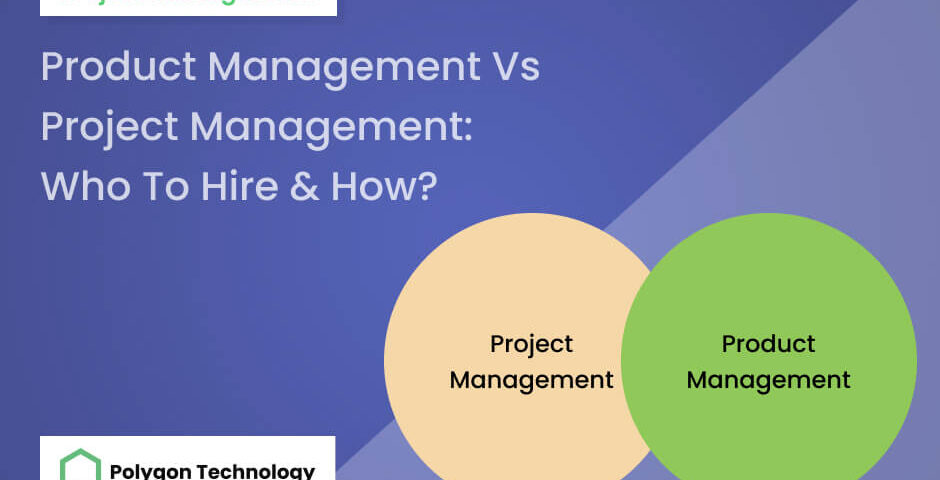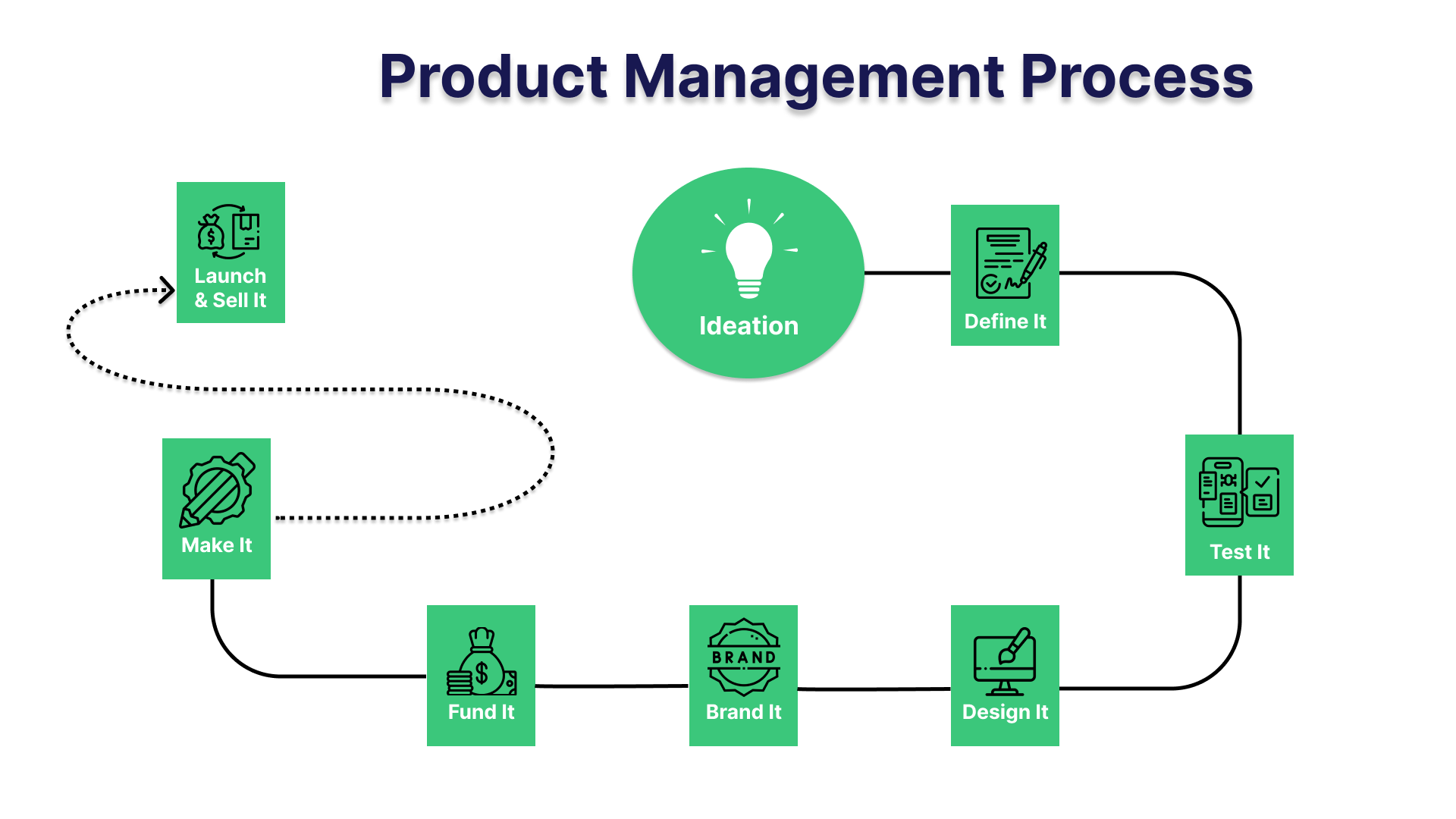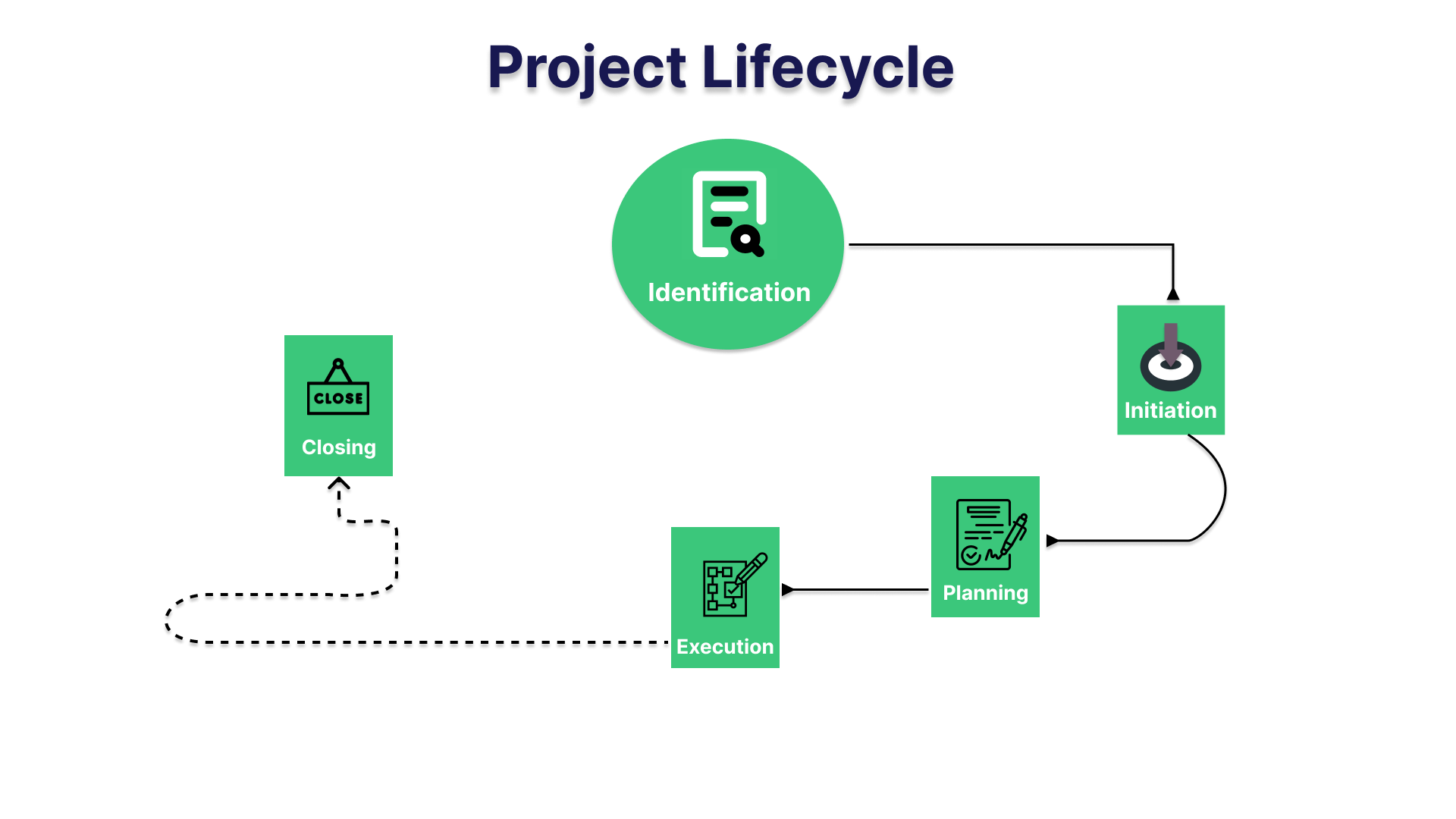
Product Management Vs Project Management: Who To Hire & How?
Product Management Vs Project Management: Who To Hire & How?

Sadman Sakib Khan
Sadman is a marketing professional and a fervent devotee of the ever-evolving world of marketing & technology. Possessing a knack for crafting compelling narratives, Sadman passionately engages in the creation of top-tier content in close partnership with esteemed subject matter experts. During his leisure hours, he indulges in the art of musical expression, immerses himself in cultural exhibitions, watch anime, and travel.

Product management and project management are both crucial for building a great product. Although, Product managers, and Project managers often work together. Their roles are very different from each other. Let’s start by defining what a project and a product are.
A project is a very specific set of tasks and goals. It’s not permanent. Because a project is considered complete when its objectives are achieved. A project is all about focusing and working toward achieving pre-defined outcomes. This involves a defined scope and resources.
The word product any good or service, whether it’s tangible or intangible is developed to be sold. So, Product management is a much broader field and permanent, or at least as long as the product is still valid in the market.
So while a project is meant to deliver specific results. A product on the contrary is meant to generate ongoing revenue for an organization.
Now that we have a clear idea of what is a project and what is a product. Let’s jump into learning more about Product management and Project management.
What is Product Management?
Product management is the function that solely focuses on a product that is meant to be sold. The process includes managing the whole lifecycle of a product. From determining product features, and specifications to managing the development, setting the price, and positioning it on the market.
It’s the responsibility of a Product Manager to ensure that the product is meeting the needs of the customers, and fulfilling the financial goals of the organization. That’s why Product Managers advocate for the customer within the organization. So that they can make sure the voice of the customers is heard.
This fervent focus on customers’ needs and problems enables product managers to build the best possible product. That solves the problem of the customers and fulfills their needs.
But Product Management doesn’t stop at the development and the launching of the product. Product managers are also responsible for gathering and analyzing data on the performance of the product. So that they again can advocate for the customers and improve the product.
What is Project Management?
Project management is an application of processes, methods, and skills. It is focused on delivering a specific goal within given constraints. The key difference that distinguishes “Project Management” from “Just Management” is because of its finite nature.
The responsibility of a Project Manager is to understand the scoop of the project and its objectives. They make sure that the efforts the project team is putting into a project should meet the needs of the project or achieve its objectives.
Project Management stops when the objectives of the project are achieved.
Product Management Process VS Project Management Process
Down below are the images that portray the big picture of how Product Management and Project Management.
First Let’s Visualize How Product Management Works

As we can see the image above shows that Product management works. From the very beginning of the ideation stage to launching the product and selling it. Even though it’s not shown in the picture Product management doesn’t stop launching and selling the product. Even after launching product managers work to make the product more marketable. Now that we have a clear visualization of how Product Management works.
Let’s Visualize How Project Management Works

Project Management starts from the “Make it” stage of Product Management. From here Project Managers start Initiating. They plan on how they’ll work on bringing the vision and transforming the roadmap into tasks with a pre-defined scoop. They figure out how they’ll execute and how long it will take for the whole team to finish the project. Afterward, they start implementing. Once that’s done they monitor and look for any potential error in the product. After finishing the monitoring stage comes the closing of the project.
Role Of Product Manager
The Product Manager owns the responsibility of making a product from start to finish. From ideation to defining it, to finally bringing a real-life Product. That’s what a Product Manager deals with. They create and maintain the vision. Afterward, Product Managers become the bridge between stakeholders, the development team, and the users. Product Managers liaise with them, and understand their requirements. Then translates them into goals. Afterwards, Product Manager forms the strategy, and roadmap, and defines the feature for a product or product line, and, aligns the development team with them.
The role of a Product Manager is very dynamic. Overall development, and success of a product depends on Product Manager. It’s cross-functional as they have to work with various departments within the organization, as well as external stakeholders. So that they can ensure the product meets both the customer’s and the business’s needs. This role is very CEO-like and often called the CEO of a product. As the role requires the individual to have in-depth product knowledge, also a sound business sense.
Now to get an even better understanding of this role. If you were a Product Manager you’d be able to answer questions like
- What’s the target market of the product, or who are the end users?
- What are the problems the product will address and solve
- How should the product look or feel?
- What is the market positioning of the product?
- What does the competition look like?
- How to ensure the product will prevail over the competitors?
- How will the product be supported and further marketed after its launch? etc.
Role Of Project Manager
A Project Manager understands the ideas, visions, and goals behind the product. Plans and translates them into tasks. Allocates resources estimate the budget, and the time it’ll take to finish them. Also makes schedules to implement them.
The role of the Project Manager is also dynamic, and cross-functional. As they make sure that the project is finished within set constraints. They maintain the balance between the constraints. Also acts as the communication medium between the team, Product Manager, and other stakeholders. To ensure the project closes within the set constraints, and the satisfaction of the stakeholders. This role is also very CEO-like, and often addressed as the CEO of a project.
Now if you were a Project Manager you should be able to answer questions like
- What are the project objectives and goals?
- What is the project scope, and how will it be defined, managed, and controlled?
- How much does the project need in order to close it?
- How will the timeline be managed?
- How to allocate resources in an optimized way?
- How will the project’s changes be managed and controlled?
- Is the team delivering the promised quality? Etc.
Some Key Difference In These roles
Product Management and Project Management are often confused with one another. Both a Project Manager and a Product Manager are referred to as PMs. Even though they are the primary focus and work scoop highly varies from each other. But they share some common characteristics as well.
The table below highlights the difference between the role of a project manager and a product manager
The Difference in Responsibilities
Now let’s get a gist of the responsibilities of a Product Manager and a Project Manager. The key difference and overlaps in their responsibilities.
Responsibilities of Product Manager:
- Develop and implement overall product strategy
- Define and manage product accumulation
- Conduct customer research and usability testing
- Manage product life cycle
- Collaborate with cross-functional teams
- Communicate with stakeholders
- Participate in budgeting process
- Monitor industry trends and competitive landscape
- Ensure product’s compliance with legal and regulatory standards
- Ensure that the customer’s voice is heard within the organization
Responsibilities of Project Manager:
- Develop and manage project plan
- Manage project scope, schedule, and budget
- Communicate with stakeholders
- Maintain the budget and time
- Manage project team
- Identify and mitigate project risks
- Monitor and report on project progress
- Manage project changes
- Ensure project quality
- Manage project procurement
- Facilitate project closeout
You can see that both roles have some similar responsibilities that overlap in some areas. Such as communications and change management. However, they have different focus areas as product managers are more focused on the development and management of its life cycle. Project managers focus on delivering specific projects on time and within budget while satisfying stakeholders’ expectations. Both aim to enhance the product’s value and usability. While simultaneously increasing customer satisfaction. Both roles are required to have very good communication.
Although there are many overlaps in their responsibilities when it comes to handling the development team. Product Managers are not the person you’re looking for. If you have a great product idea and you’re looking to develop it from scratch, the Product Manager is the person you want to hire. On the contrary, if you already have a product that lives in the market or you have a properly realized idea and are looking to develop the product. In that case, the product manager is the person you wanna hire to control and maintain the development project.
However, there are certain companies where a Product Manager may wear both hats. But as we know when one individual is weighed with too many responsibilities, the main thing you give away is quality. As projects may grow complex Product Managers will have less time to focus on strategy and market trends and all the outdoor activities. So you should go for the hire depending on your needs.
Where to hire the best Product or Project Managers?
Well in the case of hiring, there are two ways you can hire the best resource. As usual, the traditional way of hiring is always there. Another one is Staff Augmentation firms. If you don’t wanna go through the hassle of hiring, sorting through resumes, and countless interviews, then this is your way to go.
Polygon Technology is offering you a large pool of world-class tech talents. You can go through the selected and pre-screened list of human resources and hire on demand. Whether you’re looking for a Project Manager, Product Manager engineer, or even a CTO. At Polygon Technology you can get access to all these pre-screened world-class tech talents at your disposal.